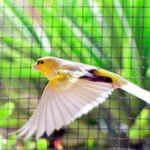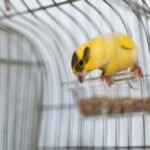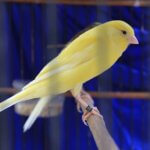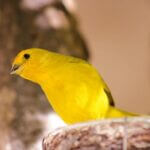Some bird species have a reputation for being difficult to tame. They can be clingy and destructive, which many owners don’t consider before getting a pet bird.
However, canaries are considered good first-time birds. They’re usually calm, even-tempered, happy to live alone, and easy to care for. However, much depends on how well they’re raised and tamed.
How you train your canary determines how it’ll behave around you and how easily it’ll adapt to living with you. Like most pet birds, canaries aren’t as well adjusted to living with humans as dogs and cats.
Although low-maintenance birds, not taming a canary can have negative consequences.
Is It Easy to Tame a Canary?
It’s so easy to tame canaries because they’re solitary birds. Wild canaries don’t live in large flocks. They occasionally get together in small groups to forage and mate but prefer being alone.
Due to their solitary nature, canaries aren’t overly dependent on their owners. They don’t get jealous as easily and won’t become destructive if they don’t get enough attention.
Do Canaries Like to Be Held?
Canaries find being held uncomfortable and rarely enjoy being touched, even by their owners. If you’re looking for a bird you can cuddle, a canary might not be the one for you.
However, much depends on the canary’s personality. While most canaries don’t enjoy being held, you may find yourself with a canary that doesn’t mind.
It’s unknown why canaries dislike being held, but it’s theorized that canaries aren’t sociable. Sociable animals that live in large groups have many voluntary ways of communicating, such as:
- Vocalizations
- Body language
- Facial expressions
- Touch
These communication styles can make social interactions within a group more nuanced and effective.
Because canaries don’t live in groups, they never developed a liking for physical intimacy. You can see this in how canaries interact when they come together with other birds.
Canaries may occasionally rub beaks when they want to mate, but they usually keep their distance.
Can Canaries Be Hand Tamed?
To hand tame a canary means to train it to perch on your hand or get held. Hand taming a canary can be hard but not impossible. The older the canary, the harder it is to hand train it due to age and mistrust.
As a canary grows older, it has a harder time learning new things. Training any pet involves conditioning, which is enforced by creating neurological pathways that turn an action into a habit. A young canary’s brain can easily form these pathways, while an older canary’s brain can’t.
As for mistrust, it is to do with the canary’s past experiences. An old canary that has been rehomed previously might have difficulty trusting new owners if it had bad experiences in the past.
Should You Train Your Canary?
Despite how easy it is to care for a canary, you should consider training them to perform certain tasks. That’s vital because it will help your canary:
- Relieve stress
- Adapt to new environments and stimuli
- Bond with you
Training your canary can be a form of playtime between you. Canaries need playtime to stay stimulated and mentally engaged. Furthermore, playing is a stress reliever for birds.
Humans are more adaptable than canaries. Many pet canaries become stressed if they experience any change in their environment. Unfortunately, living with humans means that a canary will experience some change in routine every once in a while.
This happens if you change the bird’s cage, buy new canary food, paint the room, change the furniture, or bring a new baby into the family.
Change of this nature might stress the canary and disrupt its sleeping schedule and eating habits. Once the canary’s sleep and diet are disturbed, it may develop health problems.
Taming the canary by training it to do certain things will help them re-establish its routine after a big change. The most important things the canary should learn are:
- Perching on your finger
- Going to its cage
- Coming toward you when called
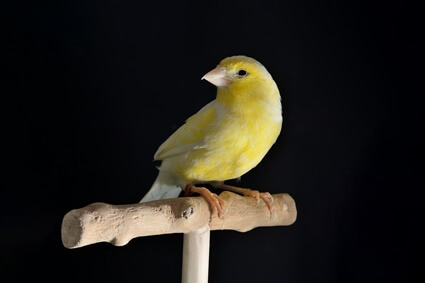
How To Hand Tame Canaries
Hand-taming a canary involves knowing your bird and having patience. Just because canaries require less attention than other bird species doesn’t mean training a canary will be a 2-day job.
Here are tips that can help you hand-tame your canary:
1/ Form A Bond
Canaries like being around people, but that doesn’t mean they’re keen to perch on your finger. They’re more likely to do this if they know and trust you.
After bringing your canary home, focus on getting it comfortable with you and its new environment. This is especially important if the canary has been rehomed from another family.
Having new owners is stressful, and no canary can focus on learning tricks when stressed.
2/ Consistent Schedule
When training your canary, you need to maintain a consistent schedule, as this helps the canary learn faster because routine aids in conditioning.
Don’t schedule the training sessions too late at night because the activity might disrupt the canary’s sleeping schedule. Instead, schedule it in the afternoon or 2 hours before bed.
3/ Short Sessions
Canaries don’t do well with long training sessions. So, the sessions should be between 10 to 15 minutes long. You can have multiple short sessions throughout the day, but never force your canary to train if it doesn’t want to. It may grow to resent you and refuse to learn anything at all.
Let your canary take the lead when it comes to the training. It should control when it wants to interact with you and when it wants to go back into its cage.
4/ Incentives
While training your canary, use positive reinforcements and incentives, like snacks and toys. Give the canary snacks and toys after they get on your finger, no matter how briefly they stay.
Reserve special treats for training and don’t give them to the canary in other situations.
Incentives are why it’s so important for you to bond with your canary. Individual canaries will be motivated by different things, so you need to know what it likes before starting the training sessions.
Giving the canary the snacks it likes from the beginning will speed up the taming process.
5/ Carry The Canary with A Perch
Get your canary accustomed to getting moved around you with a perch.
Keep a removable perch in the cage and when your canary stands on it, take it out while the canary is still on it. If your canary doesn’t like this and starts to avoid the perch, use a stick that isn’t inside the cage.
Coax the canary out of the cage with the perch or stick, and carry it around for a bit. During the first few days, don’t stray too far from the cage, and ensure the door and windows are shut.
After a few days, walk around for a longer period of time until the canary is completely comfortable. Soon enough, if you offer your finger, your canary will perch on it.
Canaries have different personalities, and most have boundaries. If the boundaries that your canary establishes is that it refuses to be hand tamed, no amount of training can change that outcome.


